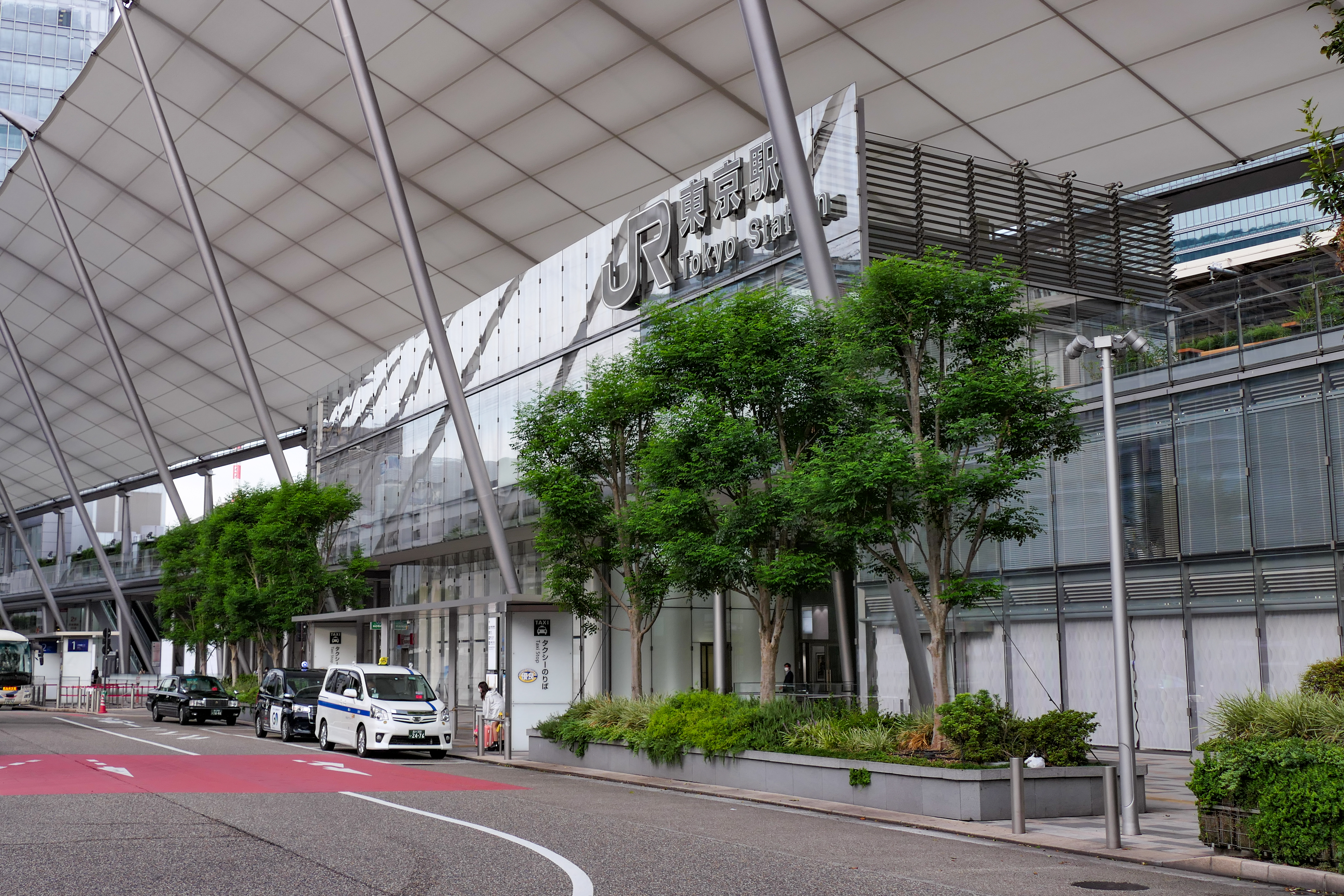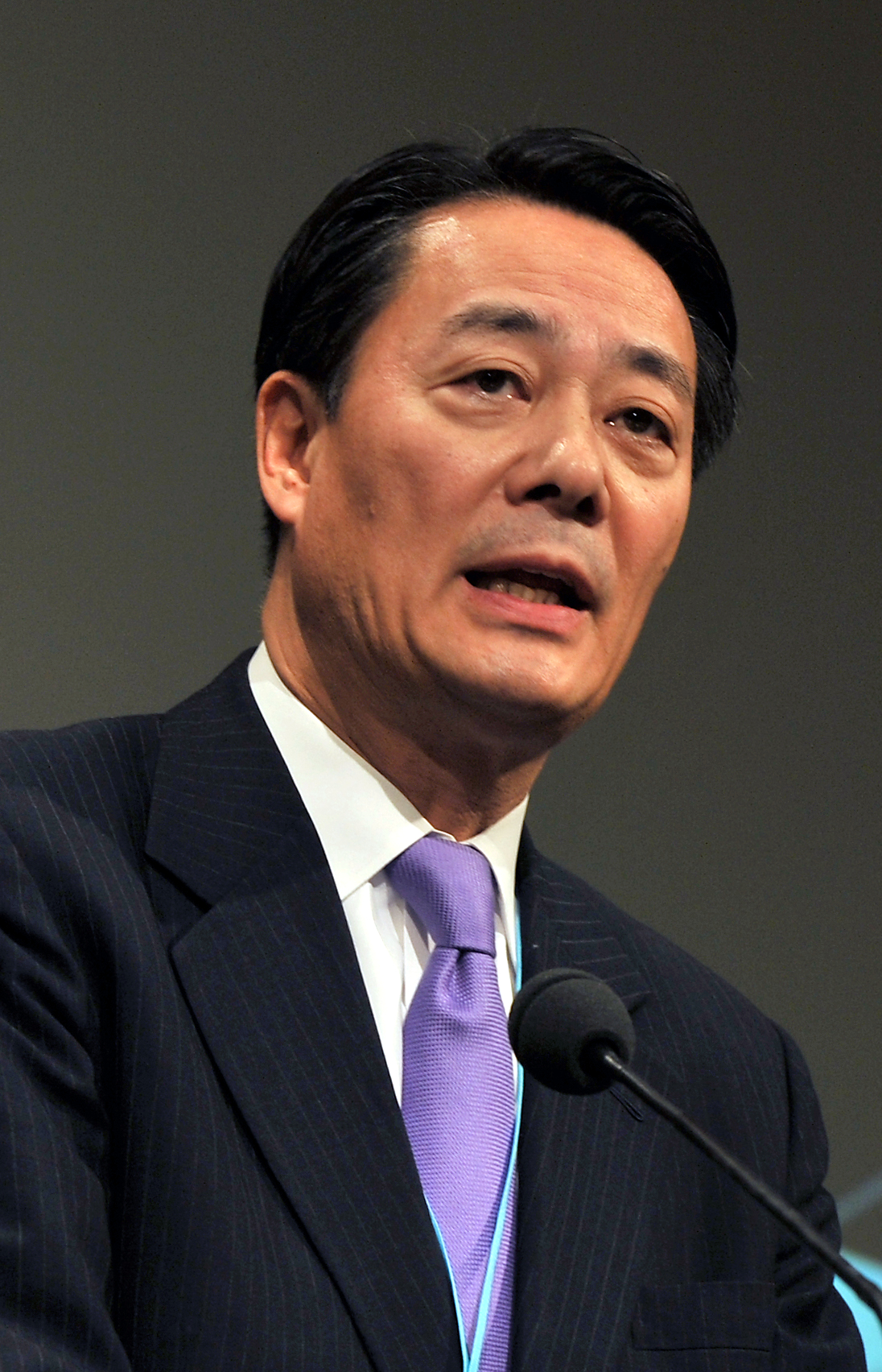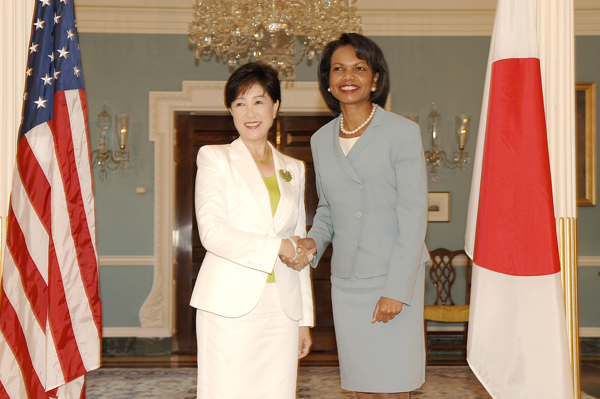|
Tokyo
Tokyo (; ja, 東京, , ), officially the Tokyo Metropolis ( ja, 東京都, label=none, ), is the capital and largest city of Japan. Formerly known as Edo, its metropolitan area () is the most populous in the world, with an estimated 37.468 million residents ; the city proper has a population of 13.99 million people. Located at the head of Tokyo Bay, the prefecture forms part of the Kantō region on the central coast of Honshu, Japan's largest island. Tokyo serves as Japan's economic center and is the seat of both the Japanese government and the Emperor of Japan. Originally a fishing village named Edo, the city became politically prominent in 1603, when it became the seat of the Tokugawa shogunate. By the mid-18th century, Edo was one of the most populous cities in the world with a population of over one million people. Following the Meiji Restoration of 1868, the imperial capital in Kyoto was moved to Edo, which was renamed "Tokyo" (). Tokyo was devastate ... [...More Info...] [...Related Items...] OR: [Wikipedia] [Google] [Baidu] |
Tokyo Station
Tokyo Station ( ja, 東京駅, ) is a railway station in Chiyoda, Tokyo, Japan. The original station is located in Chiyoda's Marunouchi business district near the Tokyo Imperial Palace, Imperial Palace grounds. The newer Eastern extension is not far from the Ginza commercial district. Due to the large area covered by the station, it is divided into the Marunouchi (west) and Yaesu (east) sides in its directional signage. Served by the high-speed rail lines of the Shinkansen network, Tokyo Station is the main inter-city rail terminal in Tokyo. It is the busiest station in Japan, with more than 4,000 trains arriving and departing daily, and the fifth-busiest in Eastern Japan in terms of passenger throughput; on average, more than 500,000 people use Tokyo Station every day. The station is also served by many regional commuter lines of Japan Railways, as well as the Tokyo Metro network. Lines Trains on the following lines are available at Tokyo Station: * ** Tōhoku Shinkansen ** ... [...More Info...] [...Related Items...] OR: [Wikipedia] [Google] [Baidu] |
Special Wards Of Tokyo
are a special form of municipalities in Japan under the 1947 Local Autonomy Law. They are city-level wards: primary subdivisions of a prefecture with municipal autonomy largely comparable to other forms of municipalities. Although the autonomy law today allows for special wards to be established in other prefectures, to date, they only exist in the Tokyo Metropolis which consists of 23 special wards and 39 other, ordinary municipalities (cities, towns, and villages). The occupy the land that was Tokyo City in its 1936 borders before it was abolished under the Tōjō Cabinet in 1943 to become directly ruled by the prefectural government, then renamed to "Metropolitan". During the Occupation of Japan, municipal autonomy was restored to former Tokyo City by the establishment of special wards, each with directly elected mayor and assembly, as in any other city, town or village in Tokyo and the rest of the country. Minority, mostly leftist calls for a were not answered. The qu ... [...More Info...] [...Related Items...] OR: [Wikipedia] [Google] [Baidu] |
List Of Cities In Japan
This is a list of cities in Japan sorted by prefecture and within prefecture by founding date. The list is also sortable by population, area, density and foundation date. Most large cities in Japan are cities designated by government ordinance. Some regionally important cities are designated as core cities. Tokyo is ''not'' included on this list, as the City of Tokyo ceased to exist on July 1, 1943. Tokyo now exists as a special metropolis prefecture (都 ''to''), with 23 special wards (with the same status of city) making up the former boundaries of the former city in the eastern half of the prefecture. Cities Dissolved cities Source data * The area figures are according tGeographical Survey Institute of Japanas of 2007-10-01. * The source websites of each prefectures' populations are according to :ja:Template:自治体人口/doc. See also * Japanese cities by population (1889) * Municipalities of Japan * List of city nicknames in Japan * List of metropolitan areas ... [...More Info...] [...Related Items...] OR: [Wikipedia] [Google] [Baidu] |
Tokyo Tower
is a communications and observation tower in the Shiba-koen district of Minato, Tokyo, Japan, built in 1958. At , it is the second- tallest structure in Japan. The structure is an Eiffel Tower-inspired lattice tower that is painted white and international orange to comply with air safety regulations. The tower's main sources of income are tourism and antenna leasing. Over 150 million people have visited the tower. FootTown, a four-story building directly under the tower, houses museums, restaurants, and shops. Departing from there, guests can visit two observation decks. The two-story Main Deck (formerly known as the Main Observatory) is at , while the smaller Top Deck (formerly known as the "Special Observatory") reaches a height of . The names were changed following renovation of the top deck in 2018. The tower is repainted every five years, taking a year to complete the process. In 1961, transmission antennae were added to the tower. They are used for radio and televi ... [...More Info...] [...Related Items...] OR: [Wikipedia] [Google] [Baidu] |
Tokyo Skytree
is a broadcasting and observation tower in Sumida, Tokyo. It became the tallest structure in Japan in 2010Tokyo Sky Tree beats Tokyo Tower, now tallest building in Japan The Mainichi Daily News, 29 March 2010 and reached its full height of in March 2011, making it the tallest tower in the world, displacing the , and the third in the world after ... [...More Info...] [...Related Items...] OR: [Wikipedia] [Google] [Baidu] |
Tokyo's Diet Electoral Districts
Tokyo currently sends 53 elected members to the Diet of Japan, 42 to the House of Representatives and 11 to the House of Councillors. House of Representatives The current House of Representatives Tokyo delegation consists of 25 members of the LDP, 8 CDP, 3 independents, 3 Komeito, 2 JCP and 1 DPP. District seats PR seats Alongside Hokkaido, Tokyo is the only other prefecture-level division with its own proportional representation block. The PR block consists of 17 members. House of Councillors The current House of Councillors Tokyo delegation consists of 4 members of the LDP, 2 CDP, 2 JCP, 2 Komeito, 1 DP and 1 independent. The members are elected from the Tokyo at-large district The Tokyo at-large district is a constituency of the House of Councillors in the National Diet (national legislature of Japan). It consists of Tokyo and elects six Councillors for six-year terms every three years by single non-transferable vote S .... References {{Japan House ... [...More Info...] [...Related Items...] OR: [Wikipedia] [Google] [Baidu] |
Tokyo Metropolitan Government
The is the government of the Tokyo Metropolis. One of the 56 prefectures of Japan, the government consists of a popularly elected governor and assembly. The headquarters building is located in the ward of Shinjuku. The metropolitan government administers the special wards, cities, towns and villages that constitute part of the Tokyo Metropolis. With a population closing in on 14 million living within its boundaries, and many more commuting from neighbouring prefectures, the metropolitan government wields significant political power within Japan. Structure of Tokyo Metropolis Under Japanese law, Tokyo is designated as a ''to'' ( 都), translated as ''metropolis''. Within Tokyo Metropolis lie dozens of smaller entities, including twenty-three special wards (特別 区 -ku) which until 1943 made up Tokyo City but which now have individual local governments, each with a leader and a council. In addition to these 23 local governments, Tokyo also encompasses 26 cities ( 市 -shi), ... [...More Info...] [...Related Items...] OR: [Wikipedia] [Google] [Baidu] |
Prefectures Of Japan
Japan is divided into 47 prefectures (, ''todōfuken'', ), which rank immediately below the national government and form the country's first level of jurisdiction and administrative division. They include 43 prefectures proper (, ''ken''), two urban prefectures (, '' fu'': Osaka and Kyoto), one " circuit" or "territory" (, '' dō'': Hokkai-dō) and one metropolis (, '' to'': Tokyo). In 1868, the Meiji ''Fuhanken sanchisei'' administration created the first prefectures (urban ''fu'' and rural ''ken'') to replace the urban and rural administrators (''bugyō'', ''daikan'', etc.) in the parts of the country previously controlled directly by the shogunate and a few territories of rebels/shogunate loyalists who had not submitted to the new government such as Aizu/ Wakamatsu. In 1871, all remaining feudal domains ''( han)'' were also transformed into prefectures, so that prefectures subdivided the whole country. In several waves of territorial consolidation, today's 47 prefecture ... [...More Info...] [...Related Items...] OR: [Wikipedia] [Google] [Baidu] |
Yuriko Koike
is a Japanese politician who currently serves as the Governor of Tokyo since 2016. She graduated from the American University in Cairo in 1976 and was a member of the House of Representatives of Japan from 1993 until 2016, when she resigned to run for Governor of Tokyo. She also previously served as Minister of the Environment in the Junichiro Koizumi cabinet from 2003 to 2006 and briefly as Minister of Defense in the first cabinet of Shinzō Abe in 2007.Koike decides to leave post, cites responsibility over information leak , JapanNewsReview.com; accessed 18 June 2015. Koike was |
Kantō Region
The is a geographical area of Honshu, the largest island of Japan. In a common definition, the region includes the Greater Tokyo Area and encompasses seven prefectures: Gunma, Tochigi, Ibaraki, Saitama, Tokyo, Chiba and Kanagawa. Slightly more than 45 percent of the land area within its boundaries is the Kanto Plain. The rest consists of the hills and mountains that form land borders with other regions of Japan. As the Kanto region contains Tokyo, the capital and largest city of Japan, the region is considered the center of Japan's politics and economy. According to the official census on October 1, 2010, by the Japan Statistics Bureau, the population was 42,607,376, amounting to approximately one third of the total population of Japan. Other definitions The Kantō regional governors' association (関東地方知事会, ''Kantō chihō chijikai'') assembles the prefectural governors of Ibaraki, Tochigi, Gunma, Saitama, Chiba, Tokyo, Kanagawa, Yamanashi, Nagano and ... [...More Info...] [...Related Items...] OR: [Wikipedia] [Google] [Baidu] |
Tokyo Imperial Palace
The is the main residence of the Emperor of Japan. It is a large park-like area located in the Chiyoda district of the Chiyoda ward of Tokyo and contains several buildings including the where the Emperor has his living quarters, the where various ceremonies and receptions take place, some residences of the Imperial Family, an archive, museums and administrative offices. It is built on the site of the old Edo Castle. The total area including the gardens is . During the height of the 1980s Japanese property bubble, the palace grounds were valued by some to be more than the value of all of the real estate in the U.S. state of California. History Edo castle After the capitulation of the shogunate and the Meiji Restoration, the inhabitants, including the Shōgun Tokugawa Yoshinobu, were required to vacate the premises of the Edo Castle. Leaving the Kyoto Imperial Palace on 26 November 1868, the Emperor arrived at the Edo Castle, made it to his new residence and renamed it ... [...More Info...] [...Related Items...] OR: [Wikipedia] [Google] [Baidu] |
Governor Of Tokyo Metropolis
The is the head of government of Tokyo. In 1943, upon the unification of Tokyo City and Tokyo Prefecture, the position of Governor was created. The current title was adopted in 1947 due to the enactment of the Local Autonomy Law. Overview The Governor of Tokyo is the head of the Tokyo Metropolitan Government, and is elected by the citizens of Tokyo Metropolis. The election is held every four years, the most recent one being the 2020 Tokyo gubernatorial election. As Tokyo has the largest economy and population in the country, the Governor's policies can greatly affect national affairs, giving them significant influence in the country. This also gives the Governor's voice in the National Governors' Association more weight. The annual budget of Tokyo is about 13 trillion yen, 10 times more than other prefectures and comparable to the national budget of Indonesia. The Governor of Tokyo Metropolis is said to have a great deal of influence in the national economy as well.In additi ... [...More Info...] [...Related Items...] OR: [Wikipedia] [Google] [Baidu] |






